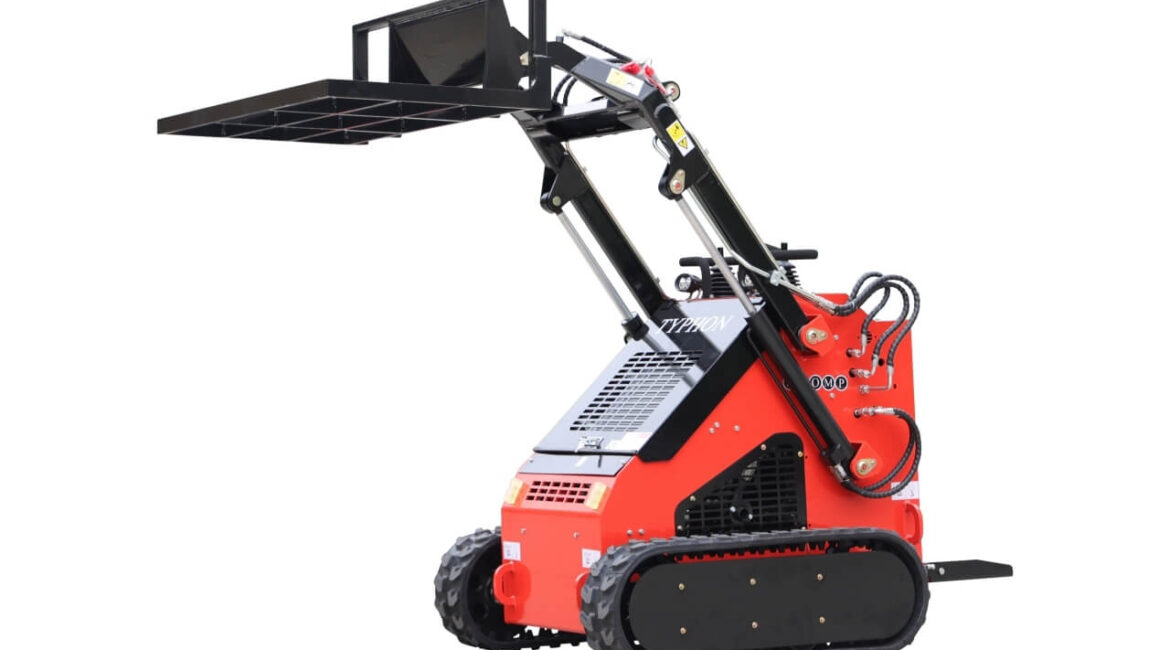For many, the mechanics of skid steers and their attachments sometimes present issues. But knowing how your equipment operates affects not just its running but also its expenses, maintenance, and most crucially, safety. Today, we would like to discuss high-flow skid steers and the need of selecting an appropriate high-flow attachment somewhat more. Here is the hydraulic flow justification and technique of skid steers right away.
What Is a High-Flow Skid Steer?
In machine systems, hydraulic flow is the movement of hydraulic fluid. A flow rate—that is, the measurement of that movement during a certain period—is stated in gallons per minute (GPM). We might therefore come across machines running at various ranges with both high and normal flow rates:
Standard flow skid steer: 16- 26 GPM
– high flow skid steer: 27- 45 GPM
The higher horsepower from your skid steer pump comes from high-flow hydraulics. Some heavy-duty tasks include grinding, tree mulching, or asphalt grinding—cold planing—call for more power. Horsepower also gauges the performance of your skid steer over a certain period of time. That relates to skid steer attachments in what way? Skid steer attachments, for instance, brush cutters are made to operate on certain hydraulic flows.
Compatibility is the secret here. You should not pick an attachment that matches with a standard flow skid steer if the application calls for extra power and thus a high-flow skid steer.
What will happen if you choose to run a low flow attachment on a high flow skid steer or the opposite? A high-flow attachment will be less efficient or useless if it gets less flow than is needed. It could potentially cause damage to the skid steer hydraulics or the attachment itself.
The Most Popular High-Flow Attachments for Skid Steers
Knowing the basics, we can now present a few high-flow skid steer attachments that will work perfectly with a high-flow system:
Swing Arm Stump Grinders
In this scenario, two components must run correctly using a high horsepower. The flywheel of the stump grinder must cut through the stump, and the swing arm has to remain functioning.
Trencher Attachments
Every high-flow equipment will be fit for trenchers. Trying a high flow trencher can help you save time if you have to cut over rocky terrain. Increased speed is one thing, but more importantly, high flow capabilities assure more torque and no breaks in the execution due to machine stalling.
Drum Mulchers
Fighting the resistance of trash and trees seems like a task requiring a lot of horsepower. If you operate at high flow, particularly if you want to cut down trees and mulch them, drum mulchers and disc mulchers are most suited to handle it.
Brush Cutters
For a machine with more hydraulic capacity, cutting through dense undergrowth is ideal work. Additionally, consider the kind of motor to prevent harming any component of your device.
Power Rakes
One of the common questions we get is: would a regular flow power rake attachment work? Indeed, their machine operates at least 16 GPM and has a robust pump. Will finishing the project require more time? Indeed, particularly under dry, hard ground conditions. With most power rakes running up to 40-45 GPM at 4000 PSI, you have the best performance to prepare a lot for sowing or to rejuvenate gravel roads.
Augers
Effective work of using gauges depends on more torque, particularly in cases where the terrain you need to operate on is tough and rough. High-flow machines create power that assures better safety as well as increases efficiency. Less likely to fail from twisting during work is the attachment with higher force.
Concrete Planers
This kind of job makes using a high-flow attachment not only sensible but also the only choice. One such very hard surface is concrete; so, only high-flow hydraulics will be sufficient.
Snow Blowers
Standard flow conditions will enable effective operation by means of snow removal, thus matching attachment and skid steer hydraulic flow. Higher flow systems will be your best choice, but if you must blow snow further,.
The Cost of a High-Flow Hydraulic System
Cost is always a major factor in any machine acquisition. Not lying, high-flow skid steers as well as related accessories are often more costly. But given other circumstances, most likely the money you save by not having the high flow option won’t help you over long terms.
First, you run the danger of harming your attachment or machine if you utilize ordinary flow attachments on more difficult and challenging terrain. Trying to utilize a lessor attachment in an application needing higher power might potentially compromise your personal safety. In this situation, it would not be economically wise to break an attachment unfit for the work or engage extra risk as an operator.
Second, the flow (GPM) determines the output of attachment. You will spend a lot longer doing the same work even if you do not harm your smaller connection by working tougher chores. Time is money, a smart man once remarked. Spending more time on certain tasks means you are not advancing to other responsibilities that can bring greater cash. You are, in a sense, paying extra for normal flow devices.
Finally, high-flow equipment will last you years and keep you safe.
Have a browse through our shop to find the best-priced high-flow skid steer attachments well-tailored to fit your needs.

